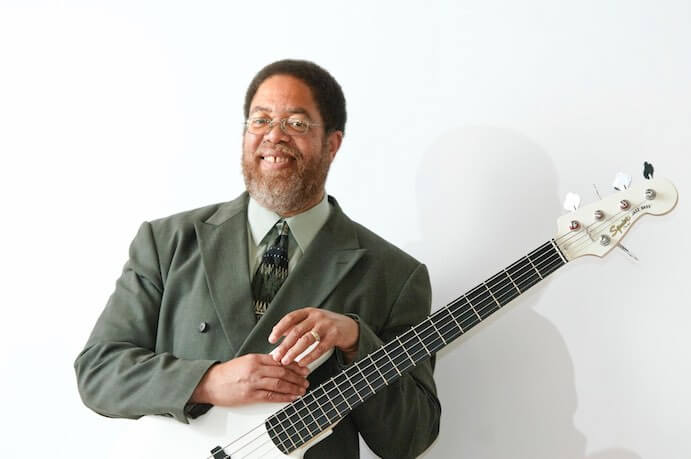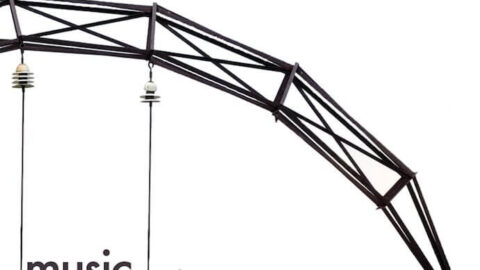New York has always been a hub for creativity–many prominent new music institutions are based there and are doing ground-breaking, dice-rolling work. It’s because of this that finding organizations that are based outside of this hub–especially ones that have been around for several decades–is all the more exciting and refreshing, and the Society for New Music is one of these institutions. The Society’s latest release, Music Here & Now (Innova), highlights composers from across the globe and features over two hours of fantastic and eclectic music from composers Rob Deemer, Ricardo Zohn-Muldoon, Gregory Wanamaker, Zhou Tian, Jorge Villavicencio Grossmann, “Doctuh” Mike Woods, and Mark Olivieri.
Beginning the first disc is Rob Deemer‘s Cantos: Hammer, String, Wind. Starting with several big hits, Cantos is teeming with energy that’s bursting at the seams, but this energy doesn’t last as pizzicato strings punctuate quasi-jazzy brass and piano that trade off with a lovely woodwind dialogue. Most instruments play fairly standard roles; the bass has consistent pizzicato, walking bass-type lines interspersed by other strings, a hushed violin solo dilutes this driving energy with other instruments interjecting their own passionate statements, and a heartfelt choral lurches towards skyward harmonics, like the ascension of autumn leaves. Deemer’s writing is at once light and bouncy, yet soulful and withdrawn.
Ricardo Zohn-Muldoon’s Jacaras for piano, violin, and cello is quite pointed, jarring, and aggressive. Each instrument has elements of their fragmented lines pointed by sharp pizzicatos and upper-register piano punches. Occasionally, the piece feels a bit start-and-stop, but this is only in one or two places. Hanna Hurwitz (violin), Ailbhe Mcdonagh (cello), and Arthur Willford (piano) give excellent performances here, particularly Willford’s harmonics within the piano; it’s a sound that feels all too rare.

The back half of Disc A is comprised of Gregory Wanamaker’s Music from A Story Within a Story. The first piece, “A Woman In Winter, Part I,” begins with a lonely clarinet peppered with lontano piano. The thin texture throughout the first half–the clarinet solo in particular–is excellent and performed delicately by John Friedrichs. “Woman in Winter, Part II” changes the mood entirely. Bright cascading percussion and sustained, tense harmonies elevate a desperate cello. In “The Maddening Crowd,” a clarinet emerges out of nowhere against a placated piano ostinato before the clarinet, flute, violin, and cello engage in a lovely trio, but this dejection doesn’t last long as large, Rachmaninoff-like piano chords heave the ensemble forward. The frenzy of “Memorial” is a striking juxtaposition to the movement’s title. A violin ostinato keeps the motion moving forward as the other instruments duke it out. This battle feels a bit longer than necessary, but the melodic lines are interesting enough to maintain focus. The closing movement, “When all is said and done…” begins with the same upward whoosh of the previous two movements. Each instrument has a repeating line that is a bit different each time, yet everything finds a way to circle back around. Constant variation yet constant repetition flows forward in ecstatic yet mournful phrases that are at once deeply romantic yet unsentimental.
The opening clarinet solo of Zhou Tian’s Morning After The Deluge begins the second disc in this collection. Out of this growth comes a flowering piano, a gentle surprise that rounds out the full force of the ensemble. Every instrument gets a moment to shine, though occasionally some lines get lost in the texture. Fortunately, clarity always finds a way to return.
Another clarinet solo begins Jorge Villavicencio Grossmann’s Whistling Vessels. Grossmann treats the ensemble much differently than the previous composers; he breaks up the ensemble into subgroups and highlights their colors through different “Cadences” and “Episodes.” Color seems to be the primary focus of the piece; so much of what occurs occasionally feels like independent events from different pieces happening simultaneously, and moments of coalescence make those events all the more interesting and powerful.

“Doctuh” Mike Woods’ Libations is the most notable stylistic departure. The jazz influence is strong here, though the piece doesn’t necessarily feel entirely “jazzy.” Libations is incredibly refreshing–the playful violin, walking electric bass, singing piano, quasi-scatting, sparking vibes, and smoothly brushed drums brought me out of the stupor and provided a nice musical buzz.
As with the previous disc, the largest composition is saved for last. Mark Olivieri’s Concertino: Stress Test doesn’t wait to get started–it goes right in. Olivieri’s rhythmic sense sets his piece apart; the consistency gives forward motion and direction. Concertino’s second movement, a slow and beautiful lamentation with floating piano chords and long violin lines, brings the mood into quiet introspection. Big, thumping piano and steady percussion open Concertino’s third movement. Ascending, intertwined lines run through and past each other dizzyingly, almost like there’s helium in the notes. This movement is a bit unfocused, but the few moments of diversion were offset by bright colors and steady pulse. Concertino’s fourth and final movement feels like a lullaby; each line gently rocked back and forth with gentle reassurance as the “stress” in Stress Test finally finds relief.
The sheer variety on these two discs is incredible, and everyone’s voices are clearly on display. Each composer showcases their unique approaches to the ensembles for which they were writing and brings out colors that only each of them would find. Music Here & Now is, in the end, a fantastic compendium of exquisite new music.
























